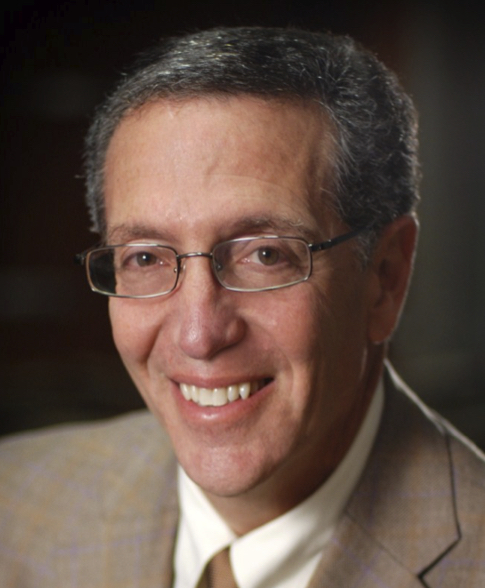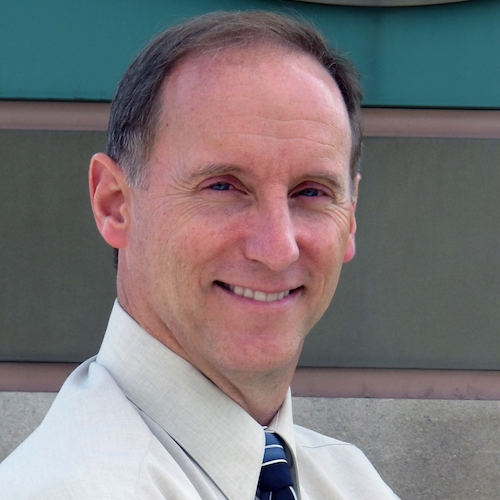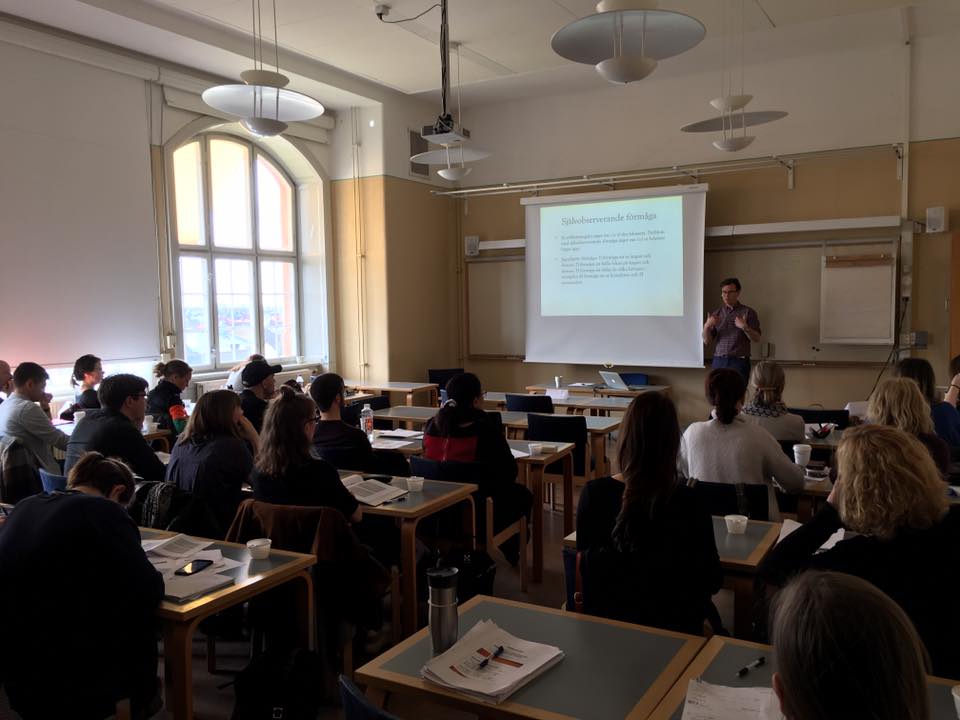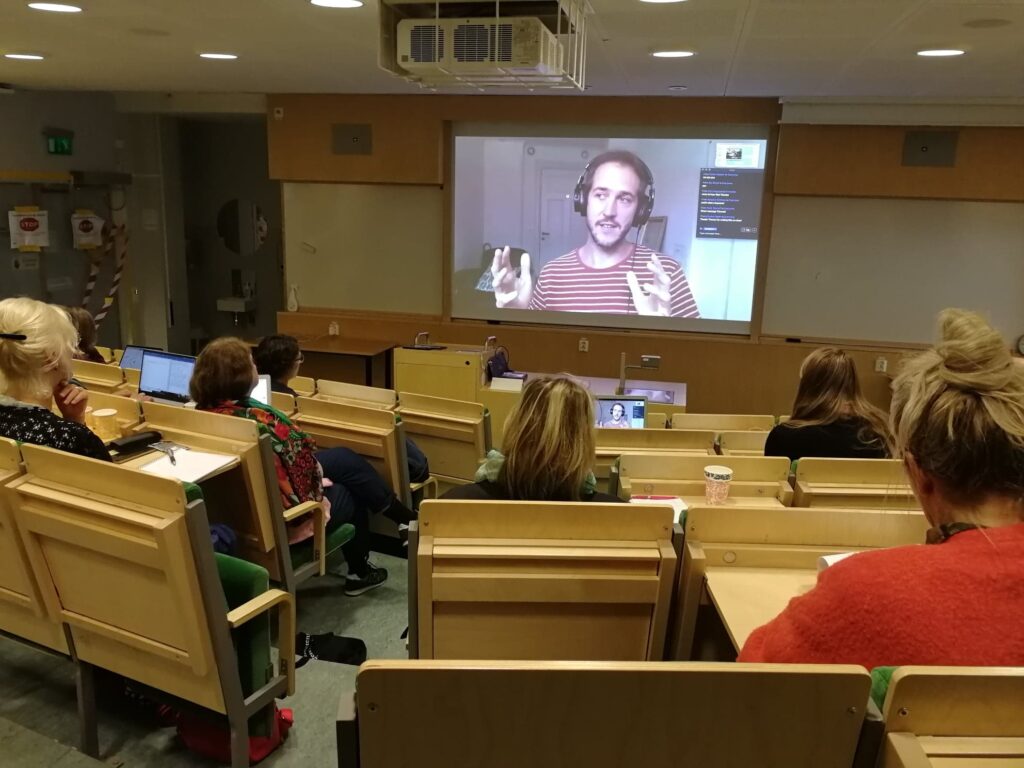Under de senaste fyra åren har det publicerats fem randomiserade-kontrollerade studier på EAET, en modifierad variant av ISTDP för olika former av kronisk smärta. I den här artikeln sammanfattar vi resultaten från några av dessa studier.
Efter en livsomvälvande Halifaxresa började Howard Schubiner och Mark Lumley en ny etapp i sina karriärer som terapeuter och forskare. Året var 2009 och de två kollegorna hade rest till Nova Scotia för att delta vid Allan Abbass årliga Immersionkurs om ISTDP. När kursen var över gick de fram och tackade Allan, och frågade om det var rimligt att nu testa att bedriva ISTDP på egen hand. Allan svarade utan att tveka: “You can’t not do it“. Väl hemma igen började de experimentera med Allans interventioner och under åren som följde så utvecklade de en lightversion av ISTDP – Emotional awareness and expression therapy, EAET.
EAET

På en föreläsning med Howard Schubiner arrangerad av Svenska föreningen för EAET i mitten av november i år så berättar han om grunderna i behandlingen. För att möjliggöra att ISTDP sprids till en bredare grupp terapeuter så har han och Mark förenklat interventionerna på några centrala sätt. Howard beskriver EAET som en slags “ISTDP med bredare penseldrag” eller som “ISTDP light”. De har även infört användandet av expressive writing som ett sätt för patienterna att på egen hand närma sig känslor genom skrivande. Där ISTDP konsekvent fokuserar på upplevelsebaserat arbete här och nu så har EAET – i likhet med många KBT-manualer – ofta ett inplanerat psykoedukativt inslag i varje session. Detta betyder också att man tonat ned vikten av att arbeta i överföringen.
Centralt för EAET är arbetet med att skilja smärta som orsakas av känslomässiga processer, eller som Howard också säger, “pain caused by the brain” – i motsats till smärta som orsakas av faktiska strukturella skador i kroppen. När andra medicinska orsaker har uteslutits och en känslomässigt orsakad smärta har konstateras så ges patienten information och övningar i syfte att bryta den destruktiva onda spiral som lett till att patienten är rädd för smärta. Man skulle kunna säga att man till en början testar om patienten är öppen för att omvärdera sin övertygelse om att smärtan är farlig blott genom att få mer information om smärta och känslor. Därefter följer ett behandlingsprogram med fokus på att närma sig blandade känslor i utmanande situationer.
Den centrala övningen för att öva känsloreglering kallas för “Experiencing, expressing, releasing” (EER) och går ut på att uppleva, uttrycka och släppa taget om konfliktfyllda känslor. Övningen har fyra steg: 1) Utforska ilska i en konfliktfylld relation och släpp taget om försvar mot denna, 2) Utforska skuld kopplat till ilskan och sorg över hur relationen ser ut, 3) Utforska längtan efter närhet och kärlek till personen, 4) Diskutera en eventuell handlingsplan (förlåtelse? gränssättning? avsluta relationen?).

Här nedan är ett exempel på hur behandlingsplanen kan se ut i EAET över två månader:
Behandlingsplan, EAET för kronisk smärta (Yarns et al., 2020)
Individuell session: Rational för behandlingen, anamnes, emotionell palpering
Gruppsession 1: Mer rational, utforskande av kopplingen mellan känslomässig stress och symptom.
Gruppsession 2: Konflikttriangeln och information/övningar kopplade till ilska och närhet.
Gruppsession 3: Den centrala övningen “Experiencing, expressing, releasing” (EER) introduceras. Patienterna tänker på en aktuell påfrestande relationell situation och utforskar sina blandade känslor kopplade till denna.
Gruppsession 4: Mer EER. Fokus på skillnaden mellan hälsosam skuld och självanklagelser.
Gruppsession 5: Mer EER. Fokus på situationer när vi blivit sårade, negligerade.
Gruppsession 6: Mer EER. Fokus på skillnaden mellan hälsosam skuld och självdestruktiv skam.
Gruppsession 7: Fokus på interpersonell kommunikation. Gränssättande och sårbarhet/öppenhet.
Gruppsession 8: Sammanfattning, utvärdering och planering för fortsatt arbete.
Två viktiga studier

I den första större studien av EAET så testade Schubiner och Lumley att utvärdera metoden för att behandla fibromyalgi. De randomiserade 230 fibromyalgipatienter till EAET, KBT eller psykoedukation i grupp. För att motverka så kallade “allegianceeffekter” – dvs. tendensen för forskargrupper att få resultat i enlighet med deras övertygelser –hade de rekryterat experter på KBT och psykoedukation vid fibromyalgi som såg till att dessa höll hög kvalitet. Även om skillnaderna var små på det primära utfallsmåttet både vid behandlingsavslut (d = 0,17-0,39) och uppföljning (d = 0,15 – 0,17) så var den generella bilden att EAET hade en större effekt än jämförelsebehandlingarna. Exempelvis fann man att EAET var mer effektivt för att behandla självskattade fibromyalgisymptom mätta med FM symptom scale (d = 0,35 – 0,45). Tydligast syntes skillnaden i effekt om man tittar på hur stor andel av deltagarna som fått en smärtreduktion om minst 50%. Där visade analysen att 22,5% av de som fått EAET, 8,3% av de som fått KBT och 12,0% av de som fått psykoedukation hade erhållit en smärtreduktion om minst 50%. Ett observandum var också att EAET-gruppen rapporterade fler biverkningar under behandlingens gång – till exempel att symptom förvärrades – även om det efter behandling var färre deltagare som hade försämrats i denna grupp (EAET 2,8%, KBT 3,5%, Psykoedukation 8,2%).
I en andra randomiserad-kontrollerad studie lottade man 53 äldre veteraner med muskuloskeletal kronisk smärta till gruppbehandling med antingen EAET eller KBT. Medelåldern var 75 år och över 90% var män. Effektskillnaderna var betydligt mer markanta i den här studien. Medan 10 av de som gått i EAET-grupp (41,7%) fick en kliniskt signifikant effekt så var det en av de som gått i KBT-grupp (5,4%) som fick det. Som man kan se i figuren nedan så var det flera av de som gått i EAET som gjorde dramatiska förbättringar, fyra av dem en smärtreduktion på över 70%. I termer av effektstorlekar så fann man att EAET hade en stor behandlingseffekt jämfört med KBT vid behandlingsavslut (d = 0,77) och tremånadersuppföljningen (d = 0,86).

LEVA med eller bota smärtan?
Schubiner lyfter fram att många psykologiska interventioner för smärta mer handlar om att lära ut effektiva sätt för att leva med smärta snarare än att stoppa smärtan. I dagsläget finns många behandlingsmetoder som gör just detta, såsom KBT och ACT. Även om dessa behandlingar är väldigt bra på olika sätt så menar Schubiner att de begränsas av denna idé om att lära sig att leva med, snarare än att bota smärtan. Även om EAET använder sig av vissa standardelement från dessa andra behandlingar, såsom psykoedukation och exponering, så är grundantagandet i EAET att smärta faktiskt går att “bota” eller åtminstone reducera dramatiskt.
Den centrala hypotesen om varför EAET skulle vara mer effektivt är att patienterna upprepade gånger får hjälp att närma sig sina blandade känslor kring stressfyllda och traumatiska händelser från tidigare i livet. Så hur ser då forskningsresultaten ut överlag? Här är en sammanfattning i tabellform av de randomiserade-kontrollerade studier som har gjorts.
| Diagnos | Deltagare | Sessioner | Resultat | 50% smärtminskning | |
| Thakur et al., 2017 | IBS | 106 | 3 | EAET > avslappning > WL | |
| Lumley et al., 2017 | Fibromyalgi | 230 | 8 | EAET > KBT > psykoedukation | 22,5% (8,3% KBT, 12% psykoedukation) |
| Carty et al., 2018 | Kronisk urogenital smärta | 62 | 1 | EAET > TAU | |
| Ziadni et al., 2018 | Medicinskt oförklarade symptom | 75 | 1 | EAET > TAU | |
| Yarns et al., 2020 | Kronisk smärta | 53 | 9 | EAET > KBT | 33,3% (0,0% KBT) |
Den mest välbeforskade psykoterapeutiska behandlingsformen för kronisk smärta är utan tvekan KBT. KBT är en väletablerad behandling med mycket goda effekter vid många andra tillstånd (så som i behandling av GAD eller tvångssyndrom), men vid kronisk smärta så är effekten betydligt mer blygsam. I en nyligen publicerad cochraneöversikt hade KBT i genomsnitt en obefintlig/minimal effekt (d = 0,09) på smärta i jämförelse med aktiva kontrollgrupper. En aktuell metaanalys konstaterade att 13,3% av deltagarna (105 av sammanlagt 789 studiedeltagare) som fått KBT för fibromyalgi fått en smärtreduktion om minst 50%. När författarna till metaanalysen kommenterar effekterna skriver de att i enlighet med studiens fördefinierade analysplan, “there was no clinically relevant benefit of CBTs.“
I de två studier där EAET jämförts med KBT ser man en viss fördel i den första studien (d = 0,17), och en stor fördel i den andra (d = 0,77). Eftersom den andra studien är betydligt mindre (N = 53) bör detta resultat betraktas som lovande men preliminärt. Vi behöver fler studier för att kunna dra mer säkra slutsatser. Vidare så uppnådde 22,5% respektive 33% av deltagarna en smärtreduktion om minst 50%. Ett kortare förlopp EAET tycks alltså kunna hjälpa drygt en fjärdedel av deltagarna till en smärtreduktion som är större än 50%.
Detta innebär dessvärre att många av studiedeltagarna inte blivit “botade”, och som syntes i figuren ur Yarns et al. (2020) ovan så var det många av deltagarna som inte fick någon effekt alls. Med tanke på att en stor andel av smärtpatienterna har strukturell skörhet och behöver ett något mer tidskrävande graderat behandlingsformat bör detta inte komma som en överraskning. För framtida studier vore det intressant att se om en längre, mer omfattande behandling – kanske med fler inslag av individuella sessioner – möjligtvis kan hjälpa fler patienter.
Svenska studier
Robert Johansson och Daniel Maroti vid Stockholms Universitet/Karolinska Institutet genomförde under hösten 2019 en pilotstudie av EAET i internetformat för att behandla kroppssyndrom. De preliminära resultaten från den studien presenterades i samband med Howards föreläsning den 13:e november. De fann att EAET i internetformat gav mer än 50% smärtreduktion för ca 22,5% av deltagarna, vilket alltså i grova drag är liknande resultat som när behandlingen testats i randomiserade studier i gruppformat. Du kan se Daniels presentation i klippet nedan, ungefär 1 timme, 43 minuter och 30 sekunder in. Formatet för internetbehandlingen är det som vi beskrivit tidigare här på ISTDPsweden: guidad självhjälp.
Tidigt under 2021 kommer Daniel, Robert och deras forskargrupp att dra igång en större, randomiserad studie av EAET som du kan läsa mer om här: http://mbsstudien.se/. I nuläget (november 2020) håller de på att rekrytera deltagare.
Den nystartade Svenska föreningen för EAET har en hemsida som du kan se här: eaet.se
Nedan hittar du våra senaste artiklar här på ISTDPsweden som handlar om nya forskningsrön:
- Studiedeltagare med kroppsliga symptom sökes
- Forskningsdeltagare sökes: terapeuters upplevelse av digital ISTDP
- Ny studie: är depression ilska vänd inåt?
- STEPSSTUDIEN: Deltagare sökes
- Modifierad ISTDP för kronisk smärta: EAET
- ERiCA-projektet: Hjälp till att rekrytera studiedeltagare
- Corestudent som behandlare: ny studie
- Är challenge nödvändigt? Ny studie
- Rapport om evidensläget för ISTDP juni 2020
- ISTDP effektivt i långtidsuppföljning: ny studie









